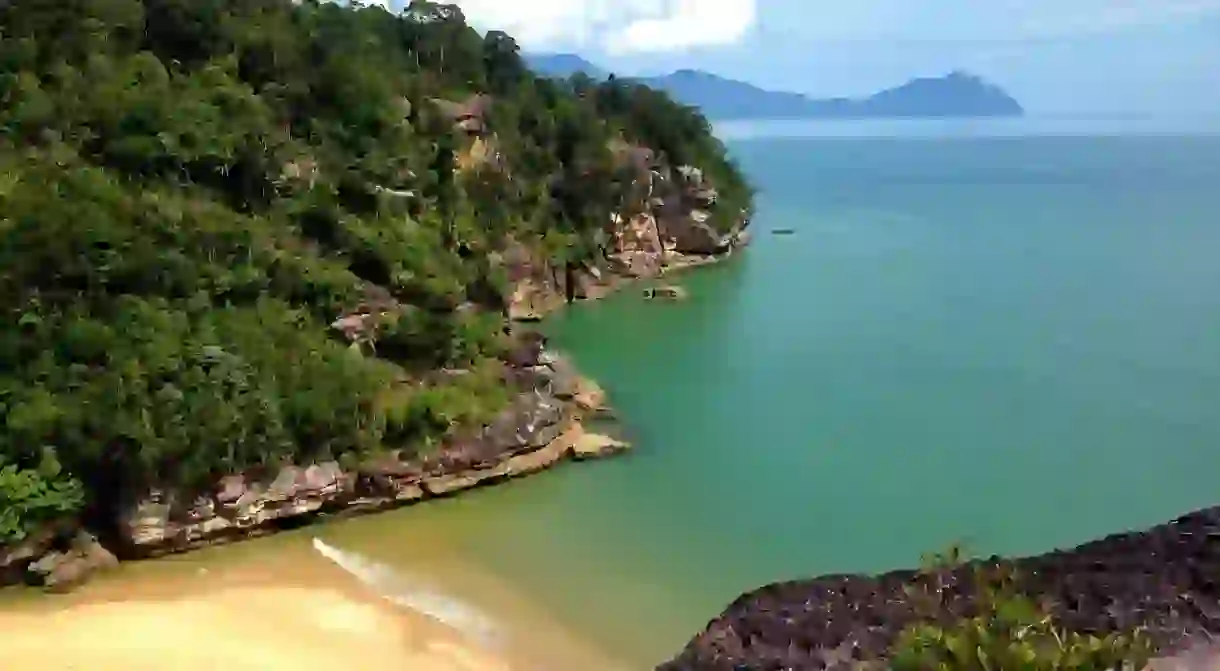Reasons Why Borneo is an Ecotourism Paradise

Borneo – split between Malaysia, Indonesia and Brunei – is one of the most biodiverse regions on the planet. Featuring vast areas of primary rainforest believed to be millions of years old and countless species of flora, fauna and endemic primates, there’s little wonder why ecotourism thrives here.
Looking to be immersed in the nature and wildlife of this Southeast Asian island? Book yourself onto Culture Trip’s 10-day adventure to Borneo, which includes a visit to an orangutan sanctuary, organic tea farm and a snorkelling trip in Kota Kinabalu.
Biodiversity
More than 16,000 plant types call the Bornean rainforests home, with approximately 6,000 of these found nowhere else on Earth. There are also hundreds of mammals, reptiles and birds, some endemic and some migratory, along with 10 species of primates. Rare and endangered proboscis monkeys and orangutans, pygmy elephants and hornbills live here, too.
The Monkeys
Bornean orangutans are endemic and lucky travellers might catch a glimpse of some living in their natural habitat. The proboscis monkey, with its unusual nose and strange behaviour, lives in Borneo as well. Head to Danum Valley to see orangutans and join a river cruise along Sabah’s Kinabatangan River or in Beaufort near Kota Kinabalu to see the proboscis. Other endemic species include gibbons, macaques and leaf monkeys.
Danum Valley Conservation Area
Located in East Sabah, Danum Valley Conservation Area is one of the few untouched stretches of jungle remaining in the world. An onsite research centre studies the unique ecology of the area while promoting conservation. Guests can stay at its accommodation and participate in jungle treks, canopy walks and wildlife spotting. Protected since 1995, the conservation area is one of the leading research facilities in Borneo.

National Parks and Protected Areas
The island of Borneo is divided between the Indonesian territory of Kalimantan, the Malaysian states of Sabah and Sarawak and the country of Brunei. Each region features various national parks and protected areas. Head to Sabah to find multiple conservation areas and forest reserves in the interior, including Maliau Basin, Tangkulap and Crocker Range. Sarawak features Bako National Park and Pulong Tau National Park. Even tiny Brunei has a few reserves within a short drive of its capital Bandar Seri Begawan. Kalimantan, covering the largest landmass, has at least eight national parks.
Orangutan Rehabilitation Centres
Sadly, the Bornean orangutan is critically endangered. Deforestation – combined with growing palm oil plantations – destroys their natural habitats. Several rehabilitation centres exist around Borneo to nurse young and orphaned orangutans, preparing them to one day return to the wild. In Sabah, head to Sepilok near Sandakan and Semenggoh Wildlife Rehabilitation Centre in Sarawak near Kuching. Visitors can watch the orangutans and get close to the young primates.

Marine Life
Tunku Abdul Rahman National Park, a series of five islands off the coast of Kota Kinabalu, boasts an impressive array of marine life and crystal clear water. Head to Sabah’s East Coast to Sipadan Island and experience deep-sea diving. Other places around Borneo are home to migratory species, including dolphins and whales at certain times of the year. It’s no secret that Borneo is one of the world’s top diving sites.

Nature on the Doorstep
Tourists don’t need to travel far to experience nature. Dense jungle and primary rainforest surround many cities in Borneo; within a short drive of Sabah’s Kota Kinabalu and Sarawak’s Kuching, you’ll find yourself in the forest. This is a huge contrast to the vast expanses of palm oil plantations in West Malaysia. Expert guides can take travellers along trails and canopy walks high above the forest floor to spot wildlife, monkeys and birds.
Sarawak’s Caves
Sarawak is famous for its caves that have several unexplored chambers and passages. From harvesting the edible bird’s nest delicacy at Niah Cave to Mulu’s Deer Cave that features at least one million bats, Sarawak provides a rich diversity in activities and experiences for ecotourists. The Sarawak Chamber, also in Mulu National Park, is the world’s largest cave chamber by volume.













